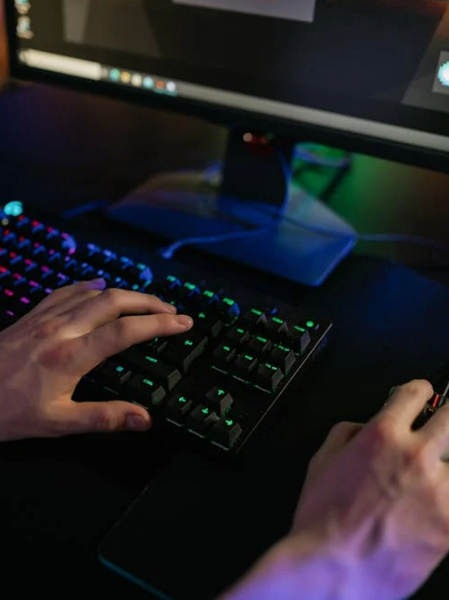At first, browsers were animals that ate leaves and twigs from trees and bushes. They kept their heads up while they ate, while other animals called grazers kept their heads down to munch on grass.
In the 1800s, the word “browser” began to be used in a different way. In Europe, new covered shopping malls became popular. These malls were a place where people could walk around and look at things, especially for women. People who did this were called browsers.
Browsers were different from grazers because they were not looking for anything specific. They were just curious and wanted to see what was around.
The word “browser” also came to mean someone who was interested in new ideas. This was because the 1800s was a time when many new ideas were being invented. People who were interested in these new ideas were called browsers.
The word “browser” is still used today to mean someone who is interested in new things. It is also used to mean the computer program that you use to look at websites.tunesharemore_vertadd_photo_alternate
In the 1800s, new places were created where people could look at things. These places were called department stores. People who went to department stores but didn’t buy anything were called browsers. Browsing became a popular pastime for the middle class.
Browsing is also a popular way to use the internet. People browse the internet to look at websites, even if they don’t buy anything. Browsing the internet is a way to experience the world without having to commit to anything.
The first web browser was created by a British computer scientist named Tim Berners-Lee in 1990. This was a big change in how we use the internet. It was originally called the World Wide Web, and it mixed the idea of the internet with the program itself. Later, they changed the name to Nexus to avoid confusion. In 1991, Berners-Lee introduced this project to his colleagues at CERN, where he was working. In the next few years, other computer scientists at different universities made their own web browsers. Many of these early browsers are not used anymore, like MidasWWW, ViolaWWW, Lynx, Erwise, and Cello.
Mosaic was the first program that made the internet easy to use. In 1994, Gary Wolfe wrote in WIRED about how Mosaic changed the way people experienced the internet. He said, “you can explore the online world freely and easily. Mosaic is not the quickest or most powerful way to find things online. It’s simply the most enjoyable way.” This new enjoyment made the internet more accessible to everyone, not just computer experts. The browser turned the internet from something used mainly by programmers and academics into something for the public. Now, the browser was not just a tool people used to access the internet; it became the way people explored and found things online.
Marc Andreessen went on to create Netscape Navigator, a browser that competed with Microsoft’s Internet Explorer in the late ’90s and early 2000s. Microsoft faced legal issues for including Internet Explorer with its operating system, but by the time the sanctions arrived, Netscape had already lost its dominant position in the market. Netscape released its software as open-source, and it later reemerged as the non-profit Mozilla and the Firefox browser. Google and Apple also entered the competition with their Chrome and Safari browsers in 2003 and 2008.

Google’s browser was different. It had a simple design, focused on add-ons, and frequently updated itself. Eventually, it became the most popular browser, replacing Internet Explorer as the face of the internet. This shift marked a significant moment in the second browser war, which went on from the mid-2000s until 2017. During this time, various browsers competed to break Microsoft’s hold on the market by enhancing their features. These improvements included common online tools like tabbed browsing, private search modes, protection from phishing attacks, and spell checkers.
Tabs became a standard feature in web browsers during the mid-2000s, though they were originally used in an obscure browser called SimulBrowse in the late 1990s. This innovation created a new way to explore the internet by letting people have multiple websites open at the same time. Tabs capture how web browsing both responded to and shaped how we experience the internet. They represent the constantly changing, scattered nature of our focus, where we’re always tempted to click and start something new. Yet, tabs also show our desire to keep our options open, hold onto our momentary interests, and never fully let go of our past online experiences.
The internet browser adds to these concerns. In the 19th century, browsing was a fleeting and temporary activity. But today, your browser remembers the places you’ve visited, the information you’ve looked up, and the questions you’ve asked. It keeps track of your history until you tell it to forget. Your browser doesn’t fully belong to you. It holds a lot of information about how you use the internet and who you are.
When you browse online, the environment changes based on your interests. Unlike flipping through magazines in a store where the other magazines don’t react, the internet constantly responds to your actions. It adapts to your habits, like what you click on and where you spend time, and shows you different things. The concept of casual browsing without commitment, especially in terms of shopping, doesn’t apply here. Using a browser means you’re participating in online activities, and there’s no such thing as idle browsing.
The internet opens doors to countless ideas, people, and things from all over the world, making it feel incredibly vast and accessible. But spending time searching and browsing online can often make you feel confined and stuck, like you’re heading towards an uncertain and sometimes disappointing destination. This might be because there’s no neutral place you can go back to for a fresh start, no stable point to reorient yourself. The internet was perhaps meant to be “surfed” like riding the waves of an ocean, where you’re carried along by natural energy, with the wind in your hair, and so on. However, in a world where the internet adjusts and changes to match your interests, a captivating online browsing session can be more like getting lost in a never-ending journey.
Online browsing is, in a unique way, less expansive than real-life browsing. Now that the browser as a tool has become more important than the browser as a person, what does that make us? Who are we—or, to put it differently, what have we turned into—when we browse the internet? Ironically, it appears that we’re more like grazers. As our search engines become smarter and do more for us—predicting what we need, guiding our attention, understanding our wants—browsing becomes less like casually picking leaves from the tips of plants and more like having someone thrust a handful of disconnected leaves right in front of your face, so close that you can’t see anything else.








